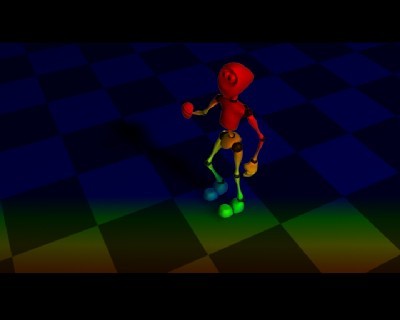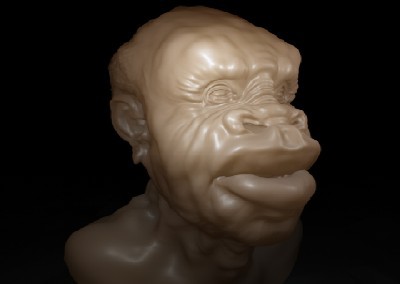Innovations Project- Seeing Things, Researching and Experimenting in the Field of Stereoscopic 3D

I have been fascinated by stereoscopic 3D imagery for some time and have even come up with a few of my own ideas relating to the field.
A Beginners Guide to Building a Fur Network

Maya Fur is a tool increasingly seen in animation work throughout the industry in recent times, from adverts to such feature films as Monsters Inc. and Shrek. As most computer-generated films strive to impress the audience with realistic special effects. The means to create these effects become more and more complex and technical to accommodate the demand, causing more knowledge to be required to use them. This knowledge may not however be possessed by the newer users of the software, but with the desire to create the final effects, problems arise.
Butterfly Flocking System

For this project I was assigned the task of creating an innovative piece of work within Computer Animation. The aim of this project was to experiment with new ideas and methods, and to learn more about an area of Computer Animation of interest to me. My project was a state machine flocking system of butterflies created using MEL (Maya Embedded Language). This report explains the processes I went through to create my final piece, with references to the research and design.
Classroom Space

Computer graphics is normally presented on a screen which in most cases is watched by viewers passively, this project attempts to explore an alternative way of presenting computer graphics, taking it out of the cinema setting and TV screens.
Implementing a Practical Renderman Skin Shader
This paper presents a simple method for implementing a practical skin shader for use within a production pipeline. The method enables effects that BRDF (see introduction) models cannot capture, such as subsurface light transport within the skin. The model was designed with the purpose of providing a practical skin shader to be easily integrated into a production pipeline.
Virtual Evolutionary Worlds
This report is concerned with the creation of virtual evolutionary worlds. It discusses world design with particular attention to the problem of achieving open-endedness. This is followed by a description of a virtual machine aimed at achieving this goal and a summary of several experiments performed using this system.
Cubism in Computer Graphics
Described as the most revolutionary modern art movements, Cubism, was discovered in the early 20th Century and abolished all traditional views of perspective and ways of seeing. Objects were expanded , pulled apart and placed in order to show them from multiply points of view. This project presents to you a technique interacting Cubism into Computer graphics. The method aims to use the technique of Analytical Cubism, particularly the work of Picasso and Braque to create computer generated models which fundamentally have the appearance of a painting so being a flat two-dimensional image.
Embodiment of a Dancer
The human body is a tool through which motion can be relayed. It is through intensive study and creative expression that this tool is able to channel and perform through art. When a dancer appears on stage her body is her tool. She expresses her emotions and her choreographed piece in an almost effortless fashion, floating across the stage seamlessly. She is the subject of our gaze. What if we were to alter our concentration slightly however and instead of focusing on the dancer herself, instead only saw her motion, the product created by the tool. Can the piece still be appreciated as much as when the visual stimuli of the tool itself was present, enabling better understanding and interpretation of the motion.
The Unknown Nature of Light

The purpose of this project is to study how light behaves in different time and space scales, as well as in frequencies of the spectrum that are not visible to the human eye. There are optical phenomena, such as Doppler shift, which humans can not easily observe because of the extremely high speed of light. But as the technology of computer graphics has evolved over the last few decades, it is possible to simulate and visualise some of those phenomena. In this report, the practical techniques and the theory needed to simulate such phenomena in computer graphics is presented. In one case, a detailed implementation is given for the Doppler shift. On the other hand, a theoretical discussion explains the advantages and disadvantages of different ways to implement simulations like bending of light near strong gravitational fields and also the delay of visual perception because of the finite speed of light.
The Mental Ray Experience

The work for my Innovations project comes under two broad categories. My first idea was to look at the use, authoring and implementation of mental Ray shaders. As work on the project progressed, my work was more focussed upon skin and the techniques used in 3d computer graphics to represent it.
